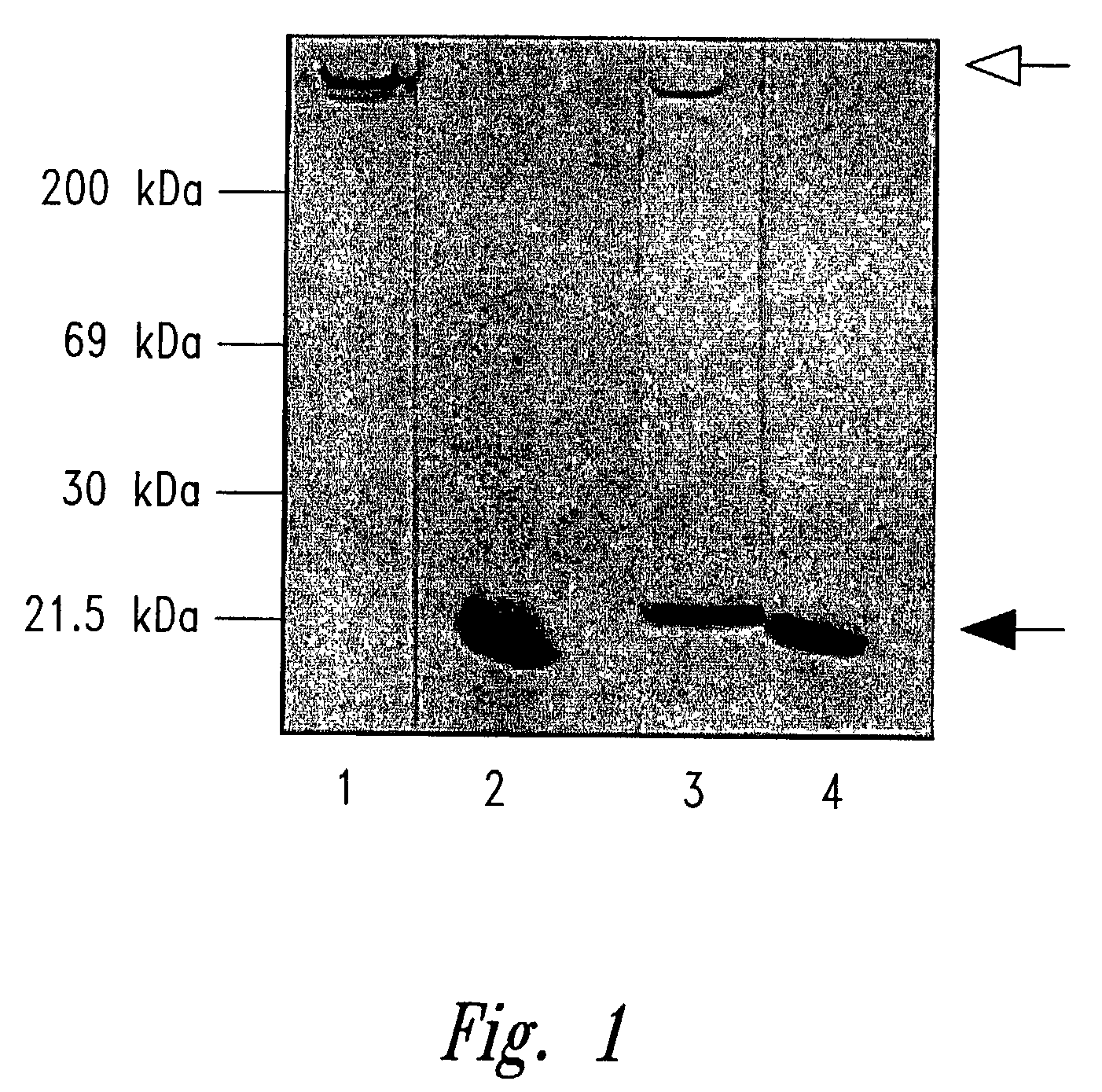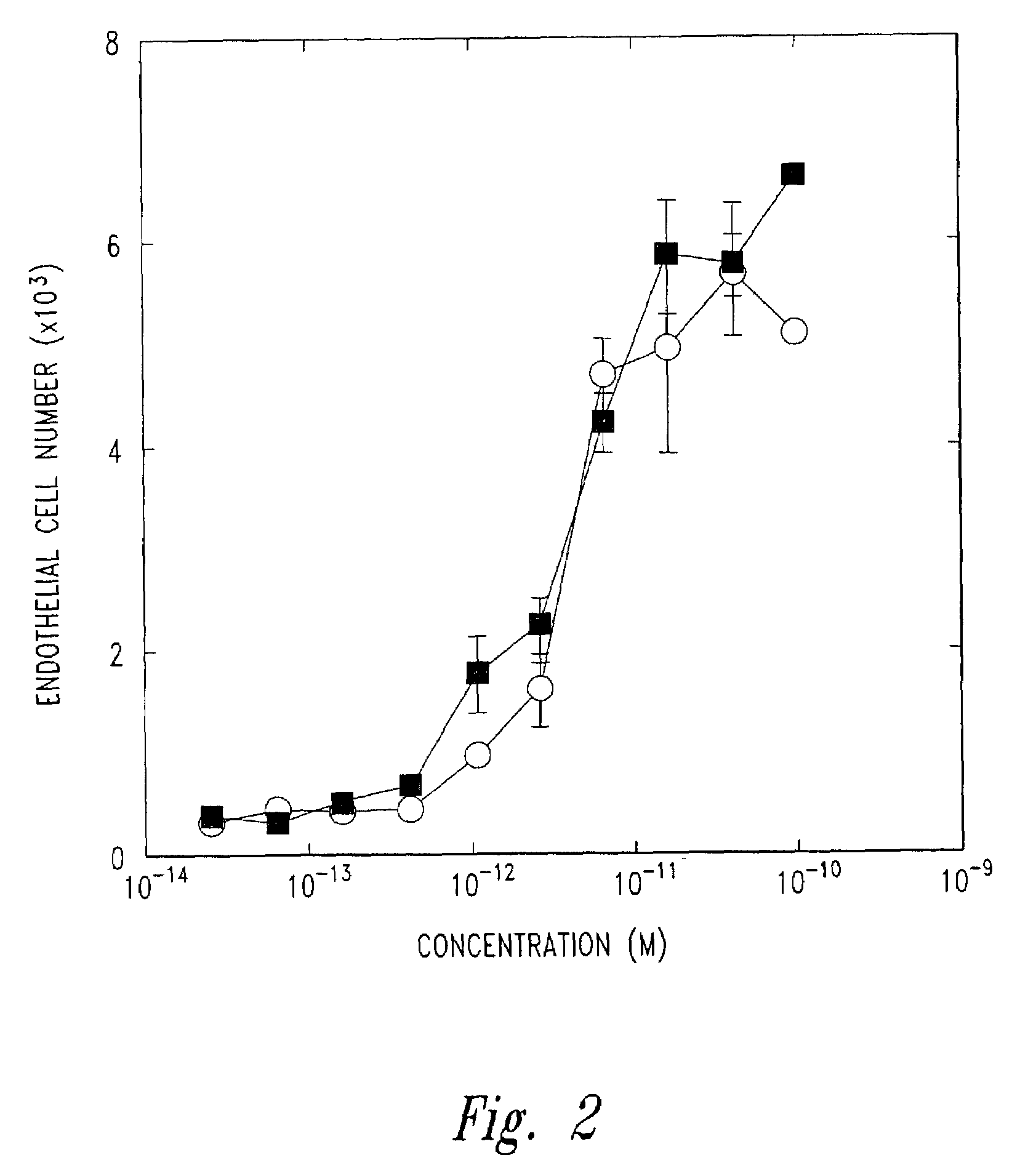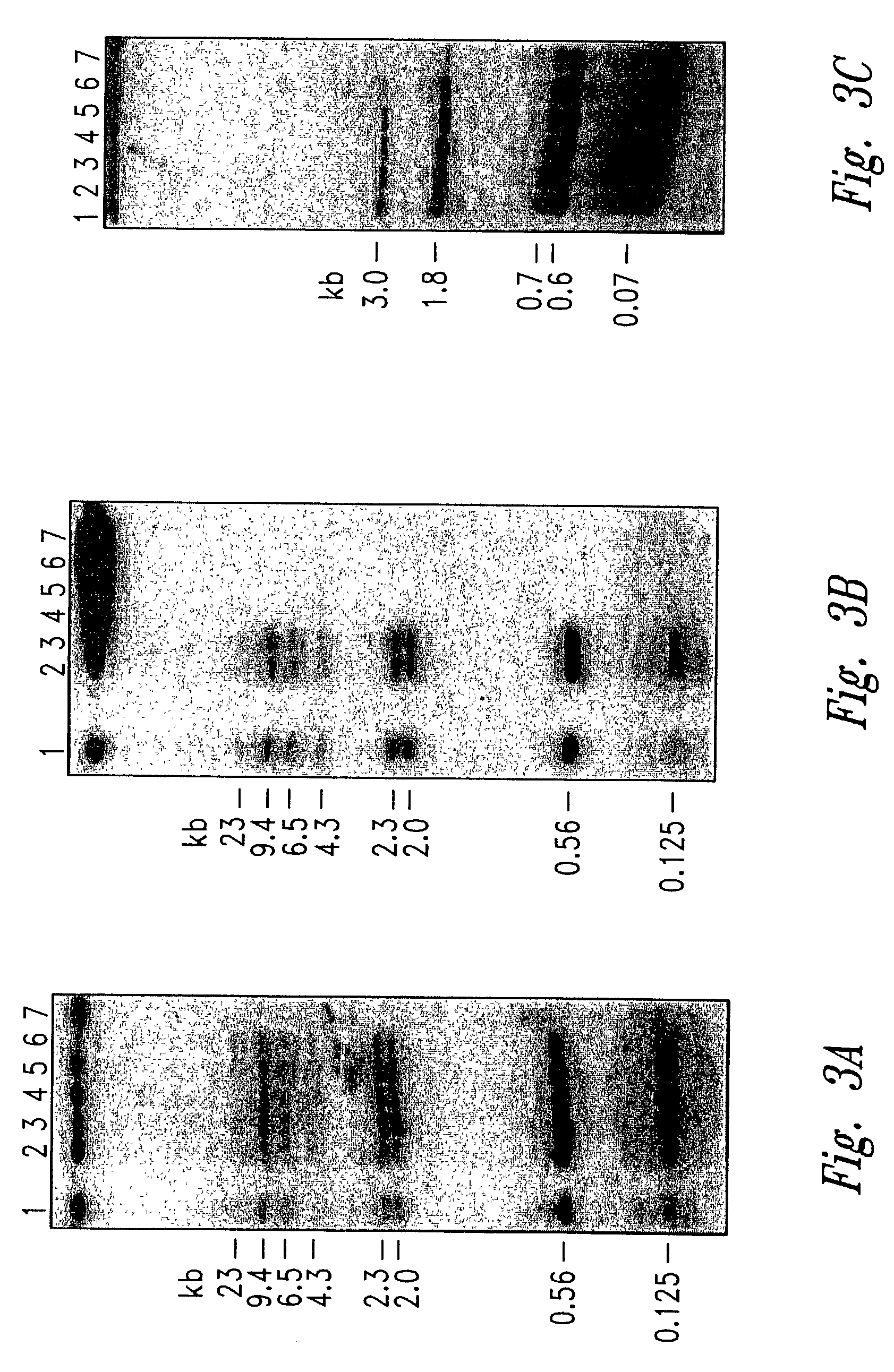Compositions containing nucleic acids and ligands for therapeutic treatment
a nucleic acid and ligand technology, applied in the field of diseases, can solve the problems of limiting the usefulness of immunotoxins, none of the requisite degree of specificity, and various methods under development for providing treatment, and achieve the effect of increasing the flexibility of conjugates
- Summary
- Abstract
- Description
- Claims
- Application Information
AI Technical Summary
Benefits of technology
Problems solved by technology
Method used
Image
Examples
example 1
Isolation of DNA Encoding Saporin
A. Materials and Methods
[0297]1. Bacterial Strains
[0298]E. coli strain JA221 (lpp− hdsM+trpE5 leuB6 lacY recA1 F′[lacIq lac+ pro+]) is publicly available from the American Type Culture Collection (ATCC), Rockville, Md. 20852, under the accession number ATCC 33875. (JA221 is also available from the Northern Regional Research Center (NRRL), Agricultural Research Service, U.S. Department of Agriculture, Peoria, Ill. 61604, under the accession number NRRL B-15211; see also U.S. Pat. No. 4,757,013 to Inouye; and Nakamura et al., Cell 18:1109–1117, 1979). Strain INV1α is commercially available from Invitrogen, San Diego, Calif.
[0299]2. DNA Manipulations
[0300]The restriction and modification enzymes employed herein are commercially available in the U.S. Native saporin and rabbit polyclonal antiserum to saporin were obtained as previously described in Lappi et al., Biochem. Biophys. Res. Comm. 129:934–942. Ricin A chain is commercially available from Sigma, ...
example 2
Preparation of FGF Muteins
A. Materials and Methods
[0325]1 Reagents
[0326]Restriction and modification enzymes were purchased from BRL (Gaithersburg, Md.), Stratagene (La Jolla, Calif.) and New England Biolabs (Beverly, Mass.).
[0327]Plasmid pFC80, containing the basic FGF coding sequence, was a gift of Drs. Paolo Sarmientos and Antonella Isacchi of Farmitalia Carlo Erba (Milan, Italy). Plasmid pFC80, has been described in the PCT Application Ser. No. WO 90 / 02800 and PCT Application Ser. No. PCT / US93 / 05702, which are herein incorporated in their entirety by reference. The sequence of DNA encoding bFGF in pFC80 is that set forth in PCT Application Ser. No. PCT / US93 / 05702 and in SEQ ID NO. 52.
[0328]Plasmid isolation, production of competent cells, transformation and M13 manipulations were carried out according to published procedures (Sambrook et al., Molecular Cloning, a Laboratory Manual, Cold Spring Harbor Laboratory Press, Cold Spring Harbor, N.Y., 1989). Purification of DNA fragment...
example 3
Preparation of Mono-derivatized Nucleic Acid Binding Domain (MyoD)
[0337]MyoD at a concentration of 4.1 mg / ml is dialyzed against 0.1 M sodium phosphate, 0.1 M sodium chloride, pH 7.5. A 1.1 molar excess (563 μg in 156 μl of anhydrous ethanol) of SPDP (Pharmacia, Uppsala, Sweden) is added and the reaction mixture immediately agitated and put on a rocker platform for 30 minutes. The solution is then dialyzed against the same buffer. An aliquot of the dialyzed solution is examined for extent of derivatization according to the Pharmacia instruction sheet. The extent of derivatization is typically 0.79 to 0.86 moles of SPDP per mole of nucleic acid binding domain.
[0338]Derivatized myoD (32.3 ml) is dialyzed in 0.1 M sodium borate, pH 9.0 and applied to a Mono S 16 / 10 column equilibrated with 25 mM sodium chloride in dialysis buffer. A gradient of 25 mM to 125 mM sodium chloride in dialysis buffer elutes free and derivatized nucleic acid binding domain. The flow rate is 4.0 ml / min, 4 ml ...
PUM
| Property | Measurement | Unit |
|---|---|---|
| temperature | aaaaa | aaaaa |
| pH | aaaaa | aaaaa |
| pH | aaaaa | aaaaa |
Abstract
Description
Claims
Application Information
 Login to View More
Login to View More - R&D
- Intellectual Property
- Life Sciences
- Materials
- Tech Scout
- Unparalleled Data Quality
- Higher Quality Content
- 60% Fewer Hallucinations
Browse by: Latest US Patents, China's latest patents, Technical Efficacy Thesaurus, Application Domain, Technology Topic, Popular Technical Reports.
© 2025 PatSnap. All rights reserved.Legal|Privacy policy|Modern Slavery Act Transparency Statement|Sitemap|About US| Contact US: help@patsnap.com



